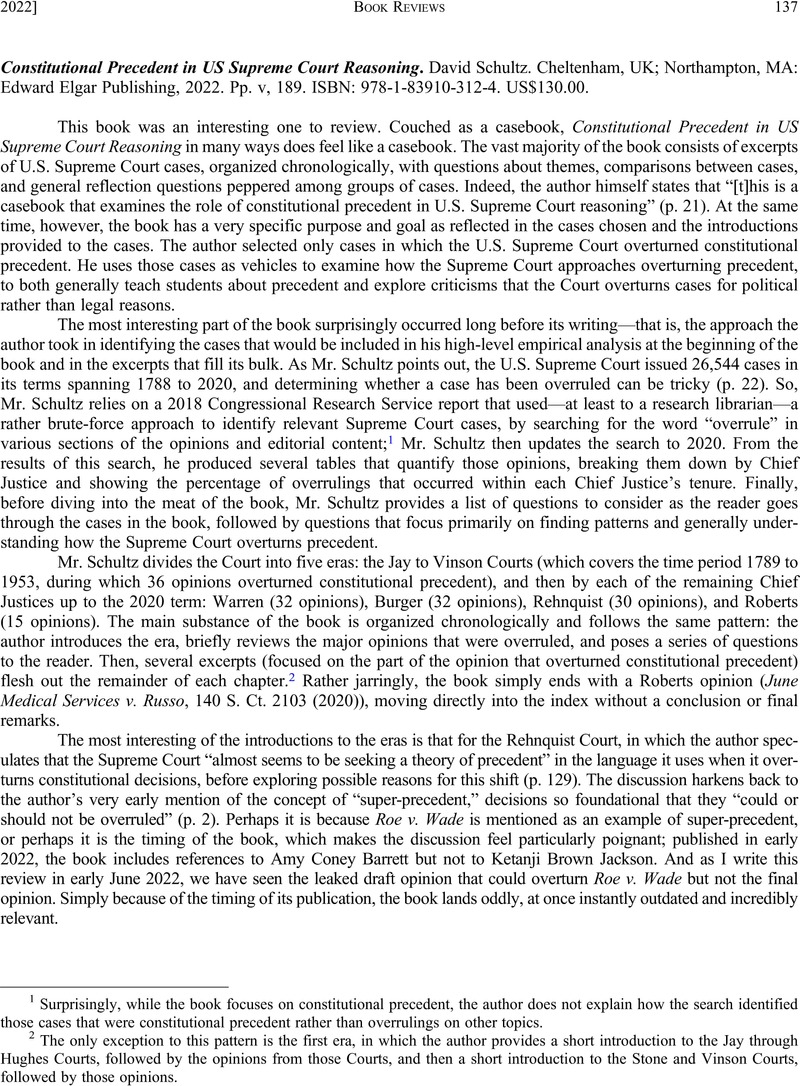No CrossRef data available.
Published online by Cambridge University Press: 18 January 2023

1 Surprisingly, while the book focuses on constitutional precedent, the author does not explain how the search identified those cases that were constitutional precedent rather than overrulings on other topics.
2 The only exception to this pattern is the first era, in which the author provides a short introduction to the Jay through Hughes Courts, followed by the opinions from those Courts, and then a short introduction to the Stone and Vinson Courts, followed by those opinions.